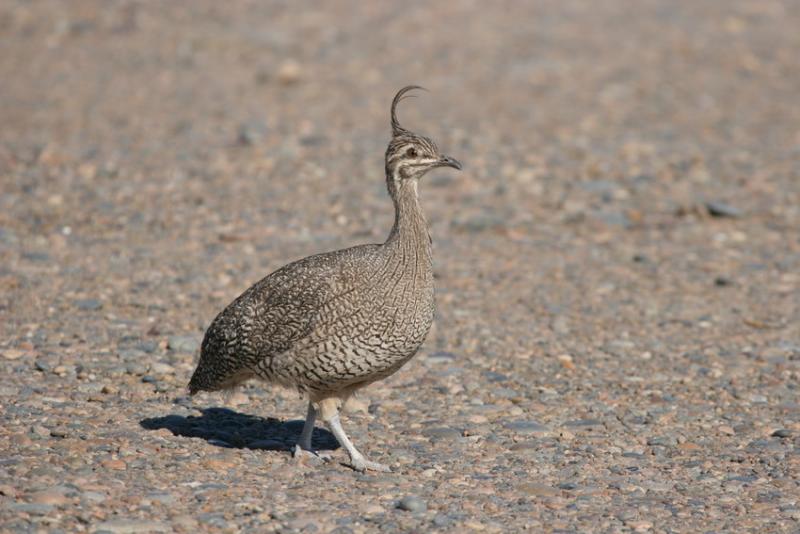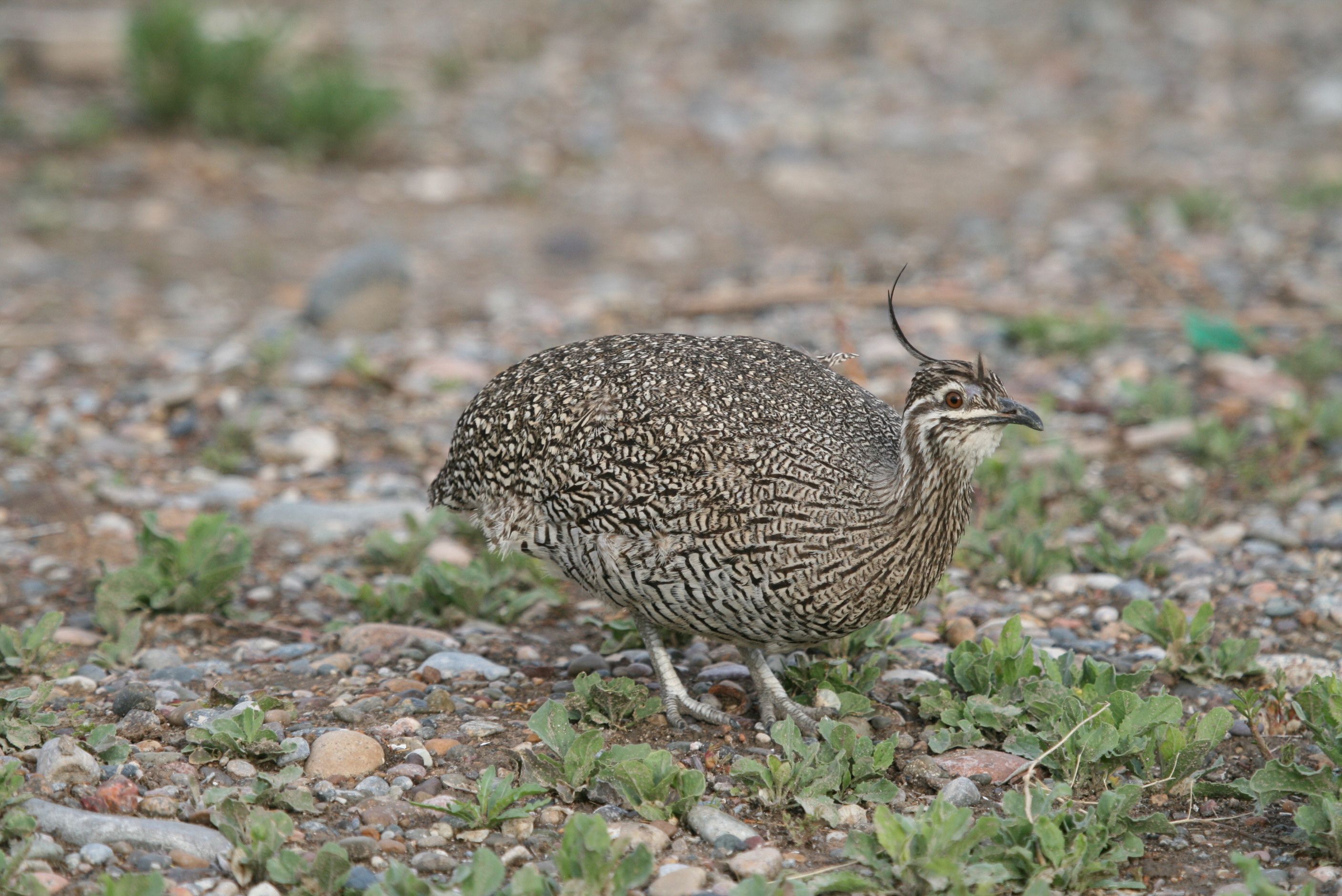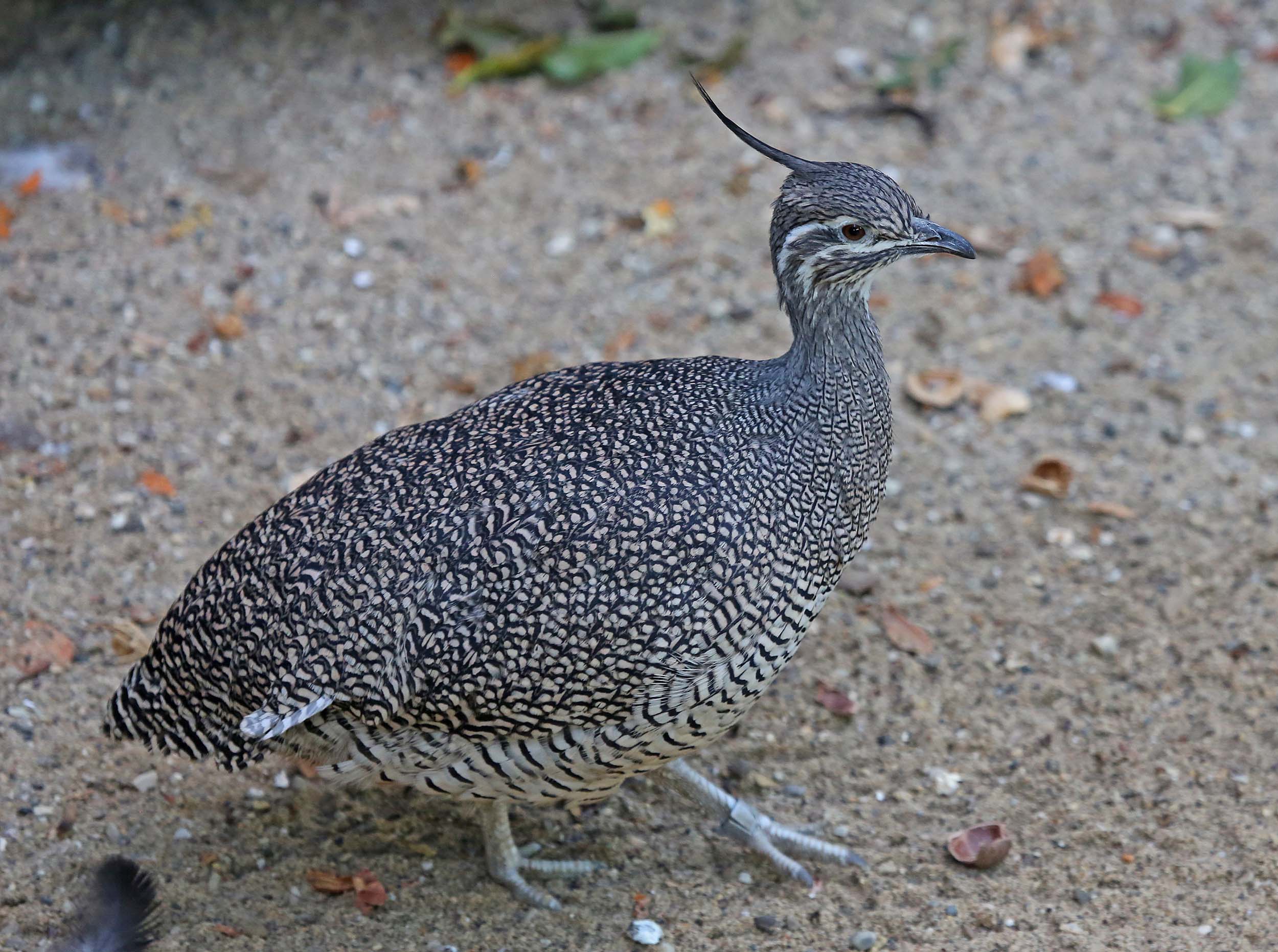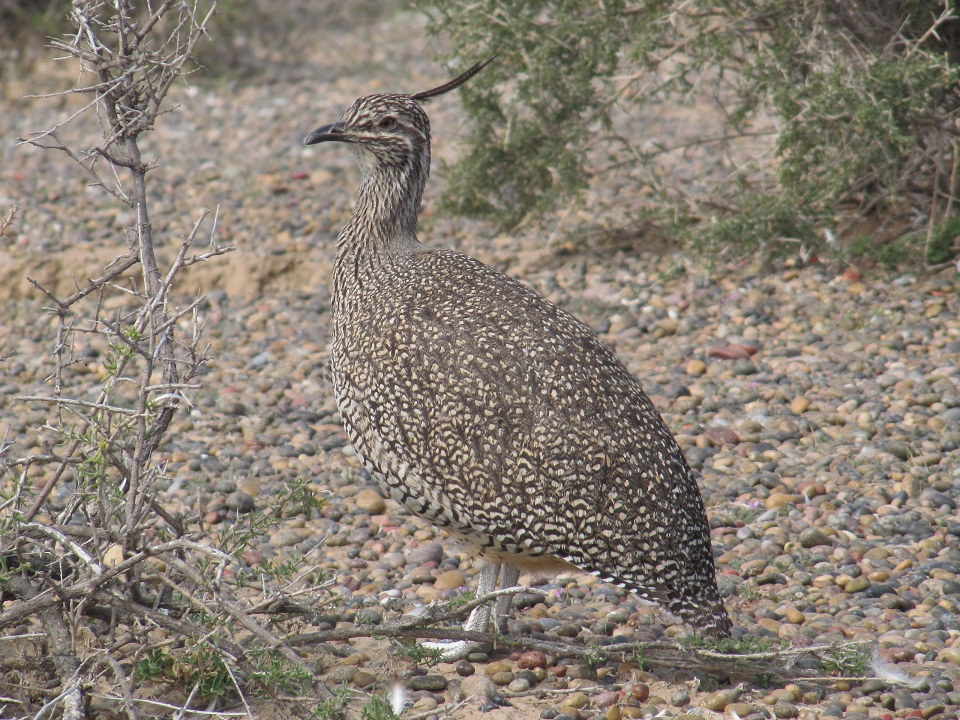
Eudromia elegans
TAXONOMY
Eudromia elegans Geoffroy St. Hillaire, 1832, South America.
Eight subspecies.
OTHER COMMON NAMES
French: Tinamou йlйgant; German: PerlsteiЯhuhn; Spanish:
Martineta Comъn.
PHYSICAL CHARACTERISTICS
15.5 in (39 cm), 1.3 lb (600 g). Leg color pale bluish to grayish
brown. Lacks hind toe. Crest is long, normally carried backwards.
DISTRIBUTION
Throughout Argentina and Chile.
HABITAT
Arid and semiarid grassland and savanna, favoring open sites,
ranging from sea level to 8,000 ft (2,500 m) in altitude.
BEHAVIOR
The call is a loud melancholy whistle. Unlike many tinamous,
this species forms small flocks, especially in winter when it invades
alfalfa crops. In spring and summer it may still be found
in pairs and small groups.
FEEDING ECOLOGY AND DIET
In winter it feeds mainly on seeds and leaves of plants; in summer
it takes many insects and invertebrates, including termites.
REPRODUCTIVE BIOLOGY
Breeding systems are polyandrous and polygynous, although
males undertake all incubation and parenting.
CONSERVATION STATUS
Not threatened.
SIGNIFICANCE TO HUMANS
It is hunted intensely and remains common only in remote
areas.
Other popular Animals
Photo Gallery of - Elegant crested-tinamou




 Animalia Life
Animalia Life